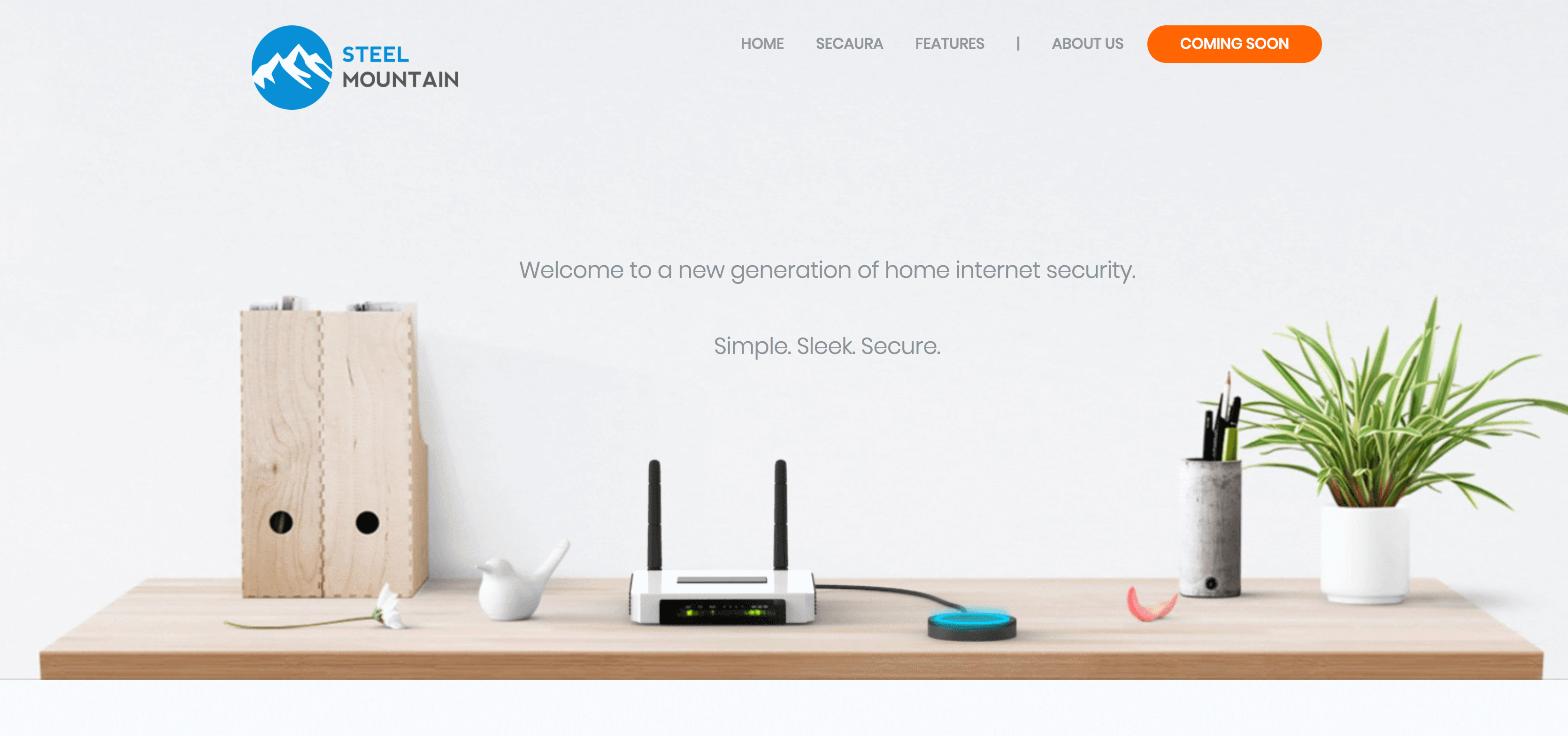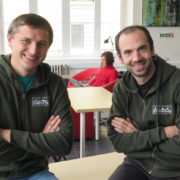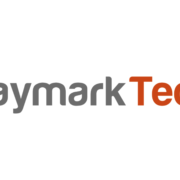10 StartupYard Companies Raised €2.2M in 2017
/in Financing, Life at an Accelerator, Starting a Business, StartupYard News/by StartupYard2017 was a good year at StartupYard. Not just financially , but also because we saw a number of our Alumni and recent graduates accomplish amazing things in the past year. Of course, 10 companies raising over €2 million total makes us very happy.
Still, the money is less important to us than what the money says, which is that these companies are doing good things that investors believe in, and that therefore we’ve done our job well.
10 Companies, €2.2 Million
More StartupYard alumni raised funding in 2017 than in any previous year. 10 Alumni and startups in the program raised funds in rounds worth between €35k and €750k. Many of these investments we’ve announced, but others have not been made public yet.
We’re also happy to report that there are additional deals in the pipeline, and we will hopefully be able to announce those very soon. We hope that 2018 will follow 2017 as another record year for fundraising.
How Does StartupYard Help Startups Fundraise?

The Network: Aside from the obvious, which is that we begin by investing in Startups that go through our program, every deal that one of our alumni have closed in the past year has been with the help of the StartupYard network.
Through mentoring, and especially Demo Day and the following Investor Week, our startups meet and get a chance to pitch a huge number of likely investors, including business angels, VCs, and even banks and large corporate investors. In every case in the past year, our startups have been able to raise money because of contacts made during the program. In most cases, the startups raised directly from StartupYard mentors or existing investors.
The Reputation: As with any long-running accelerator program with a decent track record, we have a smart group of investors who will pay close attention to any startup we work with. Being around for many years, and having made many right calls in the past, we are trusted by investors to offer clear, honest and helpful feedback about our alumni.
That doesn’t mean investors do whatever we say. But they do listen.
Our investor network know that we do not shop investments that we don’t believe in ourselves. Credibility in the investment community matters very much. You don’t always have to be right, but you have to be informed, open, and honest. I can safely say that every company I’ve worked with in the past 4 years at StartupYard that deserved an investment, got it. We find a way to make it happen.
The Program: Just as important as having the right network to do your initial fundraising, you have to be an investable company to begin with. One of the things we look for in startups we select is that they are usually almost investible, or we see that with some hard work, they will be investable sooner rather than later.
That naturally incurs a big risk for us, but it also helps define our mission- not to find “the best” most shiney startups out there, but to find the ones with the most real potential. One of the metrics we use to determine our success at picking “go over show,” is how well our startups do after our program at raising smart money (that is, from investors who know what they’re doing).
The Backup: Another quiet but important part of StartupYard’s role with alumni companies is to provide “backup” in negotiations with future investors.
Having an existing investor on your side of the table is an important practical and psychological advantage in investment negotiations. For one thing, an existing, experienced investor helps ensure that new investors behave themselves, and make fair offers on fair terms. Knowing an experienced partner is behind the startup encourages fair play and discourages game playing.
For another, StartupYard has the network and platform to expose bad actors, and to make sure our startups don’t deal with them in the first place. We have the power, in extreme circumstances, to block investments in our most recent alumni. This should be seen not as a blocker for investment, but as a negotiating advantage for startups, who can always fall back on us to block or negotiate terms that are unfavorable to the founder, on their behalf.
As we say, we can be “the bad guy,” with future investors when we are needed to be.
Listening to What an Investment Actually Says

Many founders who apply to StartupYard, and many who join us and go on to raise further investment, begin with some wrong conceptions of what raising investment is all about.
Of course, it’s the money they’re usually thinking about. But this is only part of the picture. If you need money, there are lots of places to look for it. Not all of those places are good, and not all of them are ultimately worth your effort or the risk you take in going there.
I used to joke with our founders that if you got into this business just to make money, you should just sell drugs instead. It’s almost true.
If there is good money and not so good money (clean or dirty, smart or dumb) how do you decide whom to take money from, or whom to ask for it?
Try approaching the question from the opposite tack: not “how do I get this money,” but instead: “what will it say if someone gives me this money?”
It should say that the investor believes in the upside potential of what you’re doing. Any investor in an early stage company should be nowhere near defining the real market value of the investment, because that value hasn’t been fully explored or proven yet.
The investment has to say what the investor can reasonably believe. Here are some things an early stage investment should say about what the investor believes:
- The company will be worth more in the future
- The founders are honorable and trustworthy
- The product is good and there is a market for it
- The founders will work hard, and pivot if necessary
- The founders will eventually sell or realize a profit
- Failure is possible, and ultimately acceptable
Maybe one or two of those points surprise you, but I hope not. We should not expect early investors to be total true-believers in what a startup is doing, but we should be able to answer all these questions before accepting an early investment from someone.
We should also not expect investors to be unemotional, or completely calculating in their early-stage investments. A true opportunist is a dangerous friend to have.
Picking the right investor is not just about sleeping well at night, though that’s part of it. It’s also about making sure that you actually have the clarity of vision and the confidence you will need to do what the investor believes you can do. Convincing someone of something is a lot harder than telling it to yourself.
One of the best ways to get someone to believe all the things I’ve mentioned is to really believe them yourself. The best way to believe those things is to make them true.
Make Yourself Investable
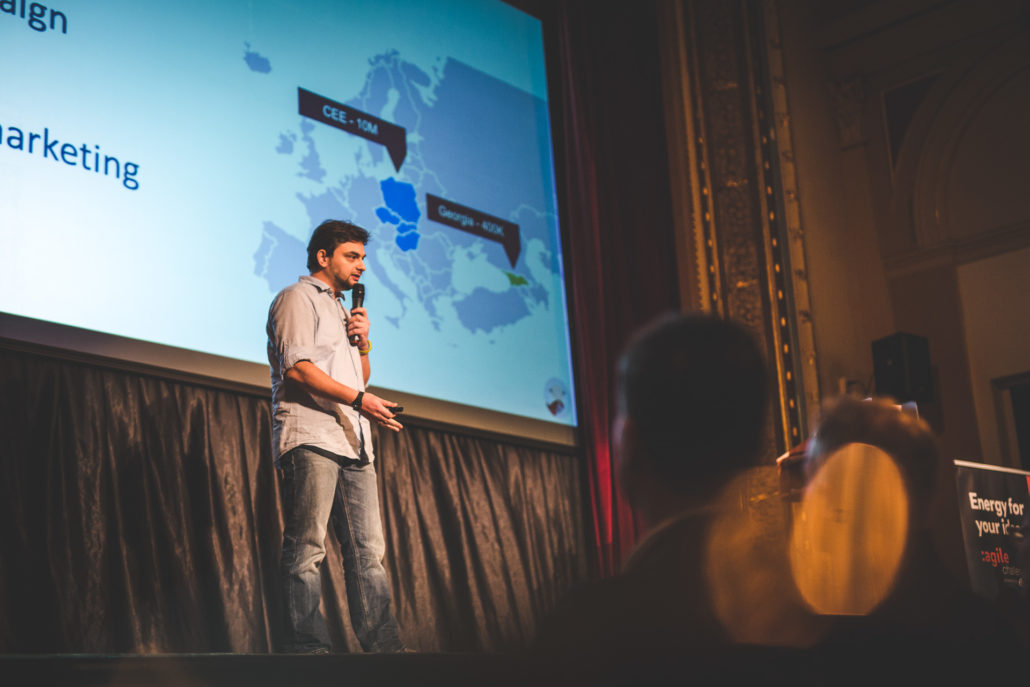
As we’ve seen, becoming an investable company is about more than having a great idea, or the energy and determination to make it happen. It’s also about the network you have, and the choices you make early on.
If you think you have a tech idea with great potential, consider working with an accelerator like StartupYard to grow your immediate network, and turn the idea into a business investors and customers can really trust.
Finding investors, just like finding any business partner, is about knowing what exactly you need, and what to reasonably expect. StartupYard helps you figure those things out.
StartupYard is currently accepting applications for Batch 9.
We’re looking for startup founders in Crypto, AI, IoT, and AR/VR!
Get started applying to StartupYard Batch 9. Applications close January 31st, 2018.
Startups: Do You Make Me Money, or Save Me Money?
/in Life at an Accelerator, Starting a Business, Startup Tools, StartupYard News/by StartupYardSomething jumped out at me from a recent podcast by Y-Combinator with Des Traynor, Founder of Intercom. Asked about the problem he solves, he described how over time, their approach to sales has changed:
“. When you’re trying to pitch them something, they just say “Hey, here’s my two numbers, which one of these are you changing?” And I think when we show up and we’re like, well if you love your users you’re going to stick around, and they’re like sh-sh. Don’t care about any of that. Are you going to make me money or save me money? And we need to get better at answering that question. And we need to have better evidence to answer that question.”
In Startup culture, there is always a lot of talk about “solving problems.” Every product and service has to solve some problem. That’s true as far as it goes, but “solving a problem” for your users is not, in itself, enough to build a business on. You have to also answer some version of this question: how do you make me money, or save me money?
As we accept applications for StartupYard Batch 9, this question will be forefront on our minds when making initial selections.
Lots of problems exist, but not all of them are promising new businesses. How do you know when you’ve nailed down that problem that people are willing to pay money to solve?
You can check out the video podcast here:
A Problem That Isn’t a Problem
The reason we always begin our acceleration program with the classic Positioning Statement, is that expressing the problem you solve is one of the hardest things an early stage startup has to manage.
Often times the “problem” founders pick to talk about is just another way of saying that their customers want their product. Maybe they do, but why?
Over the course of in-depth positioning discussions with dozens of startups, I’ve developed a sort of framework for determining whether a problem is in fact a real problem, and not a “startup problem.” While not universal, this framework is extremely helpful in determining whether you’ve really nailed down the problem you’re solving.
I apply this mental checklist:
- Does the problem have clear financial implications?
- Is the customer aware that this is a problem?
- Does the customer actively search for other solutions?
- Is this problem something your customer would list among their most important concerns?
One of the most typical early positioning problems is that founders will identify things like “a better interface,” or “more efficiency,” or “saves time,” as the key benefits of their solution to a problem.
But by applying this checklist, we can see that benefits like “saving time,” are not always as urgent as they might appear. Does the time have a clear financial cost? Is the customer aware that they can do something faster? Would they actually seek a faster solution on their own? Is this time that they are wasting a concern for them?
You can sell me a way to shower in half the time every morning, but I wouldn’t buy it. It’s only a problem if the time I spend showering is a frustration to me.
Sometimes I ask founders: “Have you ever sat down and googled: “how to do x faster?” Most of the time, they haven’t, because that’s not typically how people behave. Only when something is taking so long, and is so arduous that it has become a clear problem, do people act to find solutions.
A Case Study: Steel Mountain
Getting your positioning, and particularly your problem statement to answer those questions can mean changing deeply how you talk about what you do, and how you see your customers, and who they are.
I’m going to use the case of one of our most recent startups Steel Mountain, the home-network security company that will soon be offering a single device to monitor and protect homes from digital intruders, viruses, and other threats.
Steel Mountain, it must be said, were already in a more than usually advanced stage of development when they joined our program, but I would say this exact roadblock was among their toughest questions early on. They had a compelling product, but they needed to really be able to express the problem that it solves.
The “You Need Us” Problem
After about a month in the program, their positioning looked something like this:
“The privacy and security of homes and small businesses are increasingly at risk from digital threats. Steel Mountain’s Secaura device plugs into your router, providing enterprise grade security across your entire home network. Unlike typical security software, Secaura covers all connected devices instantly, requires no active maintenance, and employs advanced artificial intelligence against known and unknown security threats.”
That is a very straightforward positioning statement, quite typical of a security company. Just one problem: it doesn’t quite pass the checklist I mentioned earlier. Let’s see:
- Does the problem have clear financial implications?
Not really. We are told first of all that there is a threat lurking out there somewhere online. But that threat has no exact proportion, and the target customer (the head of a household or small business), is at pains to estimate how much exactly a digital threat means in terms of lost income, lost business, theft, or other mischief.
- Is the customer aware that this is a problem?
Maybe… although given that this is such a simple solution to a complex problem, it’s rather doubtful that anyone who truly understands the problem doesn’t already have a solution in place. Perhaps there is market awareness of the problem, but we aren’t yet clear from this statement that the target market knows they’re in real danger.
- Does the customer active search for other solutions?
Again, it’s not yet clear whether the target customer actively engages with this problem at all. Some probably do, but the alternatives mentioned, such as security software, serve only a minority of households. Most do not have a sophisticated solution in place. Is the product only for security minded people, or is it for people who can’t deal with complex solutions?
- Is this problem something your customer would list among their most important concerns?
Again, we can speculate that the typical household or small business does not list security among its top concerns. Those that do are probably using more complex solutions. For those who are using no solution, it is seen more as a low-level, constant issue that many people would rather ignore than understand, and most people believe will never have an effect on them either way.
As we can see clearly from this checklist, we haven’t identified an urgent, well-understood need from a well-defined target customer.
Making the Problem a Real Problem
How did Steel Mountain come down to a positioning statement that did involve a clear problem and urgent need for the solution?
First, they took the painful but necessary step of considering that while their expertise and the value of the product as they see it is in security technology, the typical customer in their target market has no way of evaluating such products.
Instead, they went back to these 4 checklist questions and identified a problem that satisfies all of them at once.
The problem they identified was this:
“Parents of families feel great pressure to provide a safe digital environment for their children, and are prone to wasting money and effort on partial security solutions that never completely protect their homes and families.”
Bingo.
For starters, we have narrowed the customer set in this positioning statement to parents. In doing so, we’ve been able to identify a more universal emotional and social problem that the target customer can easily identify with.
So the problem is no longer: “my home is not secure,” but instead: “I am afraid of feeling like a bad parent who can’t protect their family.”
How does it do with the checklist?
- The problem has clear financial implications. Every parent has wasted money on safety equipment that wasn’t really needed. This solution promises to end that guess-and-check approach to digital security.
- The customer is very aware of the problem. Any parent who gives their child a smartphone or a tablet knows the dangers, and tries to consider them.
- Nearly every parent in the target market has or will in the future investigate digital security to protect their children. The solutions are in fact much broader than merely software, as in the earlier positioning statement. Education products, specialty devices, operating systems, and many other solutions are available to address the same concerns. This solution can now be compared to those as a cost effective and complete alternative
- Child safety is a top concern for most families with children. Again, by shifting the problem to one of “parents with children” rather than “owners of homes,” we have also shifted the conversation towards top concerns that parents have, for their children. Now, rather than comparing Secaura to an anti-virus software, we can compare it to other home security essentials: baby monitors, door locks, or fuse-plugs.
This process also helped the founders identify more features of the product that were very attractive for customers. Parental content locks, and “bedtime” settings for individual devices, though the founders had included them as an afterthought, were of prime interest to this new target market.
The reactions the founders got began to change because of this new positioning.
When Steel Mountain’s CEO Will Butler began pitching the company with this strategy, the change in enthusiasm was remarkable. People in his target market started asking: “Can I have one?” And “I’ve always wanted that!” It went from a geek product to something the customer had to have, and should have already owned.

Steel Mountain CEO Will Butler pitches about the stress of living up to your role as a parent.
It’s often said that “people don’t buy security.” What’s really meant by that is that people have a hard time seeing the value of something that protects us against a problem we don’t understand. If the product solves a problem we do understand, and even better, one we already have right now, then the customer is much more likely to consider buying it.
Some security companies only manage to sell to customers who have already been victimized by attacks and theft. But others find a way to sell “peace of mind,” instead.
When solutions really find a clear and understood problem and customer, they begin to feel not just strong, but practically inevitable. Why hasn’t someone done this before?
Applying it Yourself
Of course, not every problem has to do with security, or money, or peace of mind. Your customer might not be concerned with saving or making money. The logic of the framework is about the relevance of the problem to a particular customer. Have you picked a customer and a problem that match?
If not, how can you change your thinking about who the customer really is, or what their problem really might be?
Squaring that circle is never easy. As a founder, you’re naturally absorbed in what you’re building, and driven by your own reasons for building it. Opening up and applying that work to problems you haven’t considered is part of a continuous creative process. It involves talking to your target customer and others about what their real feelings and concerns are.
You have to talk to a lot of people. Not just customers, but the people who sell to those customers, and understand them best.
Getting the problem right is a life or death challenge for an early stage company. That’s one of the reasons an accelerator can be such a great choice for a team like Steel Mountain, or many other companies we’ve worked with. The opportunity to shift your thinking and test it with so many mentors and potential customers in such a short time is a rare opportunity for a startup.
StartupYard is currently accepting applications for Batch 9. We’re looking for startup founders in Crypto, AI, IoT, and AR/VR!
Get started applying to StartupYard Batch 9. Applications close January 31st, 2018.
Why Cybersecurity Startups Should Apply for StartupYard Batch 9
/in Starting a Business, StartupYard News/by StartupYardStartupYard is currently accepting applications for Batch 9. One of the key verticals we are focusing on during this round is Cybersecurity.
Prague, and StartupYard itself have a long history of security successes, which we’ll cover here.
In the past 4 years, StartupYard has accelerated a number of high-profile tech startups, which have gone on to have a big impact. These include enterprise mobile security firm TeskaLabs, secure storage and exchange platform Cryptelo, and most recently, the home network security provider Steel Mountain. We are looking forward to adding companies in the cybersecurity, cryptography, and blockchain in Batch 9. Applications close January 31st 2018.
Why Cybersecurity?
There is no single more pressing issue than cybersecurity in the technology industry today. As big data proliferates, and AI takes over many tasks and systems formerly run by humans, our digital lives and businesses become less physically vulnerable, and more dependent on secure transfer, storage, and access to data and the devices that use it.
As StartupYard’s recent alum, Steel Mountain founder Will Butler put it on this blog: a digital attack on your home now has a greater potential danger than a physical one. These dangers are not only related to money or to privacy, but increasingly to basic safety as well.

The number of potential weak points in digital security continues to multiply daily, constantly increasing the rewards to those who would steal information and compromise networks.
For enterprises and governments, the story is much the same. Forbes magazine called 2017 The Year of CyberWarfare, and from attacks on democratic institutions to massive data breaches in enterprise systems, affecting billions of individuals, this has turned out to be true.
State actors and potential terrorists have also gotten into the game, with massive black-hat propaganda campaigns, targeted data thefts, DDOS, doxing, and more. This year saw organized cyberwarfare against Ukraine, and a possible state-sponsored attack on public and private utilities across Europe in the wannacry ransom attack.
Why StartupYard?
As the number of threats to our data and our electronic systems has increased, a new wave of cybersecurity companies has risen to meet the challenge.
2017 was a record year for cybersecurity startup fundraising. The sector has grown from under $1bn in 2012 to over $5bn today, with a record 44 M&A deals occurring in the first quarter of 2017 alone.
You might think that in this kind of environment, a team with a cybersecurity product and a few brain cells between them could make it big. And in fact they could, if they were very, very good, and very, very lucky.

The reality is that even in a hot space, and sometimes even *especially* in a hot space, differentiating yourself and building a network that will sustain you and grow your business for years into the future is as hard as it ever was.
Growing a global business is hard, even when you’re selling something everyone needs. Especially when you’re selling security, which everyone needs, and no one wants to buy.
Note our emphasis on sustainability and the future. StartupYard believes strongly in building a sustainable global business for the future. The winners in cybersecurity will be those who started with a stable foundation, a network of mentors who know what they’re doing, and a set of investors ready to support them long term.
So here are the ways StartupYard can help a Cybersecurity Startup in 2018:
Trust and Reputation
You may know the old line about conservative business decision-making: “Nobody gets fired for buying IBM.” This is still very true. Security is all about trust and reputation. Big corporations with complex decision-making processes and complex needs have to work with companies they know.
After all, no one wants to “buy security.” They want to buy peace of mind – insurance against things they don’t want to think about.

The only way your technologies will end up being used at Microsoft, or IBM, or by a government or a bank, is if someone who already has that level of trust and comfort with those same customers helps you to enter the inner circle.
That is exactly what StartupYard’s mentor network is set up to do: give startups a ready-made relationship with trusted partners who can make those connections for them, and help them build trust faster than they could on their own.
Location and Community
StartupYard is at the heart of the Central European tech ecosystem, and our home city, Prague, is a hub for cybersecurity technology in Europe. World leading security companies such as Avast, Cognitive Security, and AVG were founded and grew right here, along with Eset in neighboring Slovakia. Their influence, knowledge, and reputations have made the Czech tech ecosystem particularly suitable for security companies looking for partners who understand the value of their work, and how to use it.
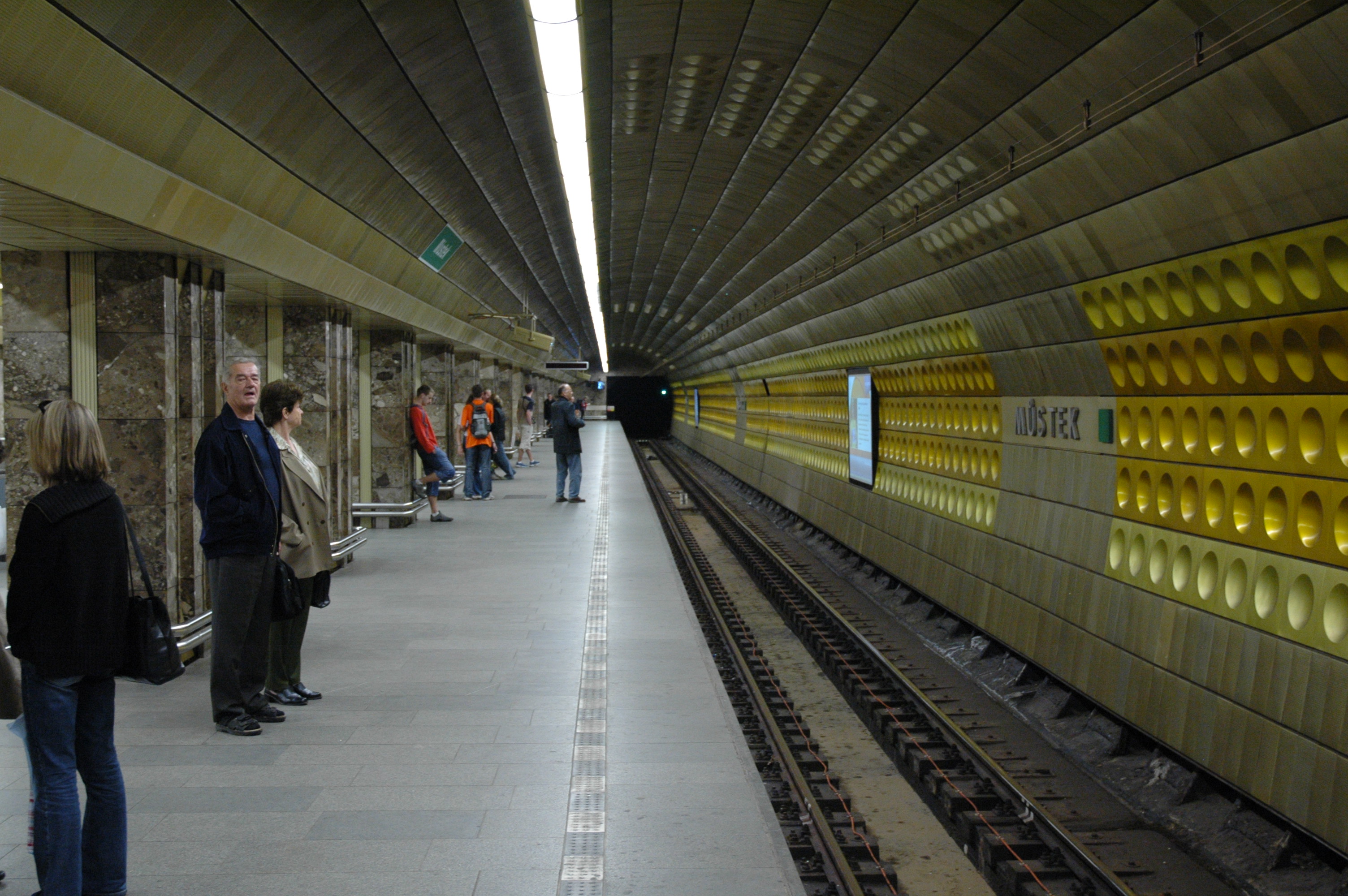
Not only is Prague an excellent place to develop a cybersecurity business, it’s also a great place to build your team, including engineering and sales. Czech security and cryptographic skills are among the highest in the world. The region is known for producing superior talents in security engineering, and knowledge of sales in this field is particularly strong.
StartupYard has a deep web of connections to this industry, that growing companies can leverage right away to grow and position themselves for success.
Experience and Knowledge
All of which would be meaningless, if StartupYard were not the home of more than one high-profile cybersecurity startup.
Our track record includes companies such as TeskaLabs, the first Czech company ever to attend TechStars, and now a profitable and growing company with major enterprise clients such as O2 and Cisco. We also have Cryptelo, which boasts a world-leading standard in cryptology, with secure storage and transmission of data.
And there’s Steel Mountain, our latest investment in the field, focusing on consumer digital security, who have recently signed agreements with a major manufacturer to build their breakthrough home network security solution for families.
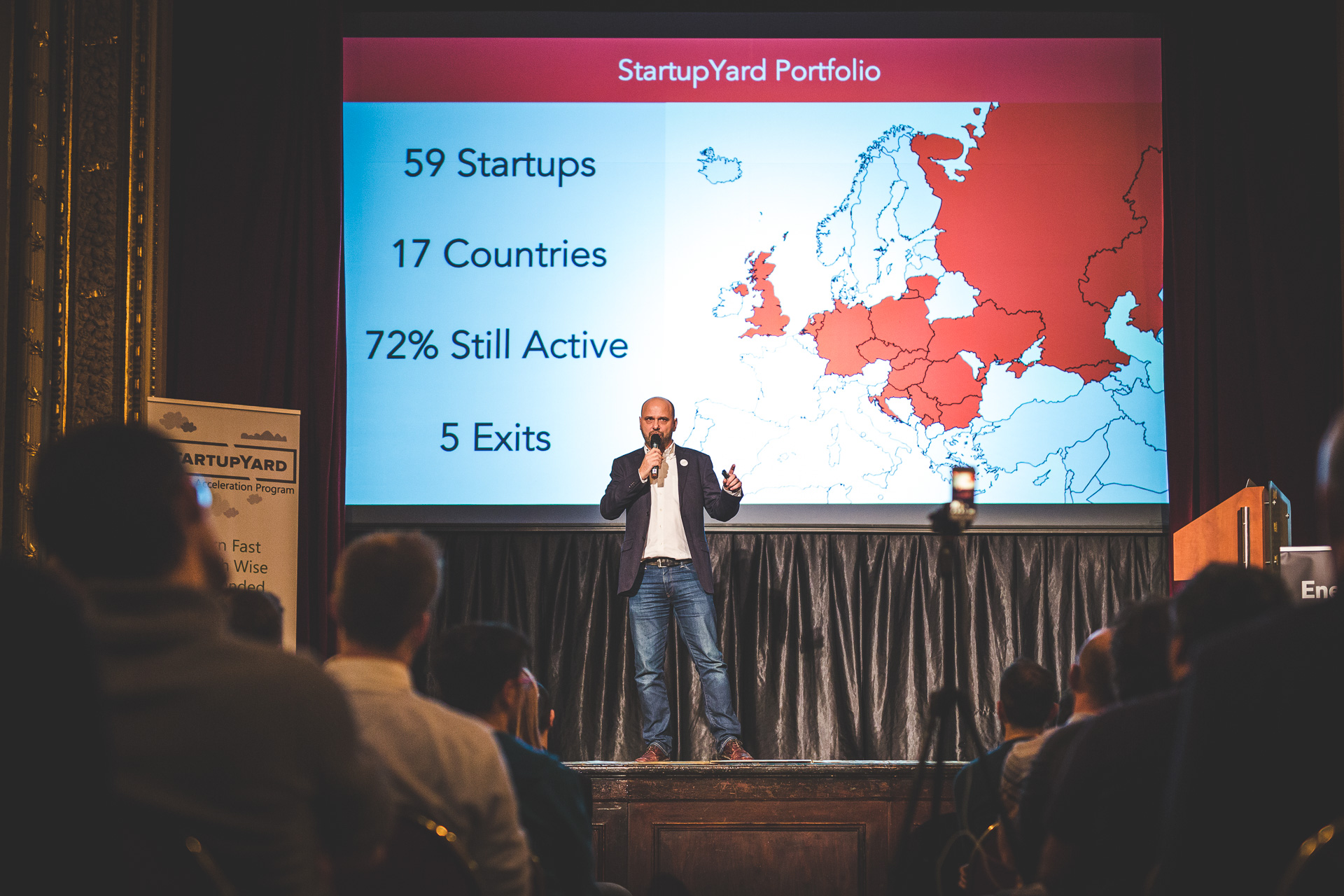
These companies contribute to our team’s experience in cybersecurity, but they also act as mentors and support mechanisms for future startups in the StartupYard program. They bring a network of mentors, investors, and advisors with a proven track record of getting results for growing companies in the field.
Should my Cybersecurity Startup Apply to StartupYard?
Are you an early stage company, with a unique approach to a serious security issue, that would benefit from a deep network of mentors and advisors with long experience in cybersecurity?
Are you two or more founders, who know the value of an accelerator, and are looking to build a global, sustainable business, serving clients potentially all over the world? Do you believe in what you do? Do you think you can convince others that you’re right?
Does your work have the potential to impact the lives of many people in a positive way?
If so then yes, you should apply.
Get started applying to StartupYard Batch 9. Applications close January 31st, 2018.
Why Should VR-AR Startups Apply to Accelerators in 2018?
/in Starting a Business, Startup Tools, StartupYard News/by StartupYardApplications are open for StartupYard Batch 9!
Are you a startup, or an entrepreneur with a great Deep Tech idea?
Applications are now open.
Why Should VR-AR Startups Apply to Accelerators in 2018?
VR/AR (Virtual Reality and Augmented Reality), have been around as concepts for a long time. What we might recognize as VR in its modern form dates back, surprisingly, to the 1950s, when the inventor Morton Heilig developed the “Sensorama,” a machine that combined stereoscopic images, binaural sound, and even smell into 5 short films.
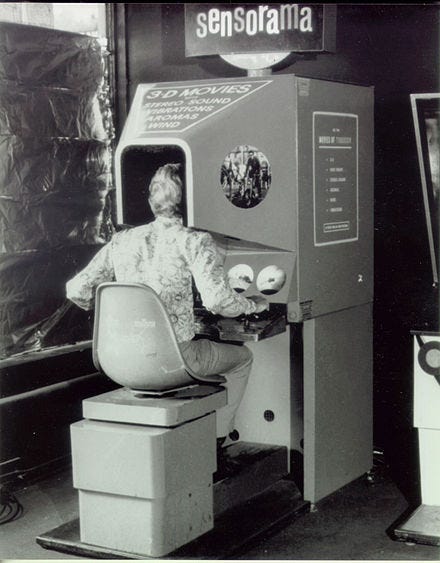
Augmented Reality, or AR, has in fact found broader applications in the past few decades. It is common in military applications, and in aviation, where it is used to enhance HUD (Heads Up Displays) with flight data. Today, even some production cars include HUD displays as a safety and ergonomic feature.

Since the 50s, VR has periodically captured the public imagination — notably in the 1990s, when both Sega and Nintendo developed headsets (though Sega’s never reached the market). Even photorealistic 3d simulations were possible by the late 1990s — I tried one myself at the Kennedy Space center nearly 20 years ago. But despite the hype, VR has never taken the mass market by storm.
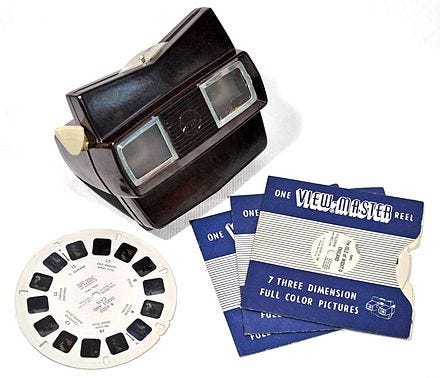
This post will dive into some of the reasons why not, and why now is probably different.
For the past few years, familiar signs of a resurgence in VR popularity have been growing. What has changed?
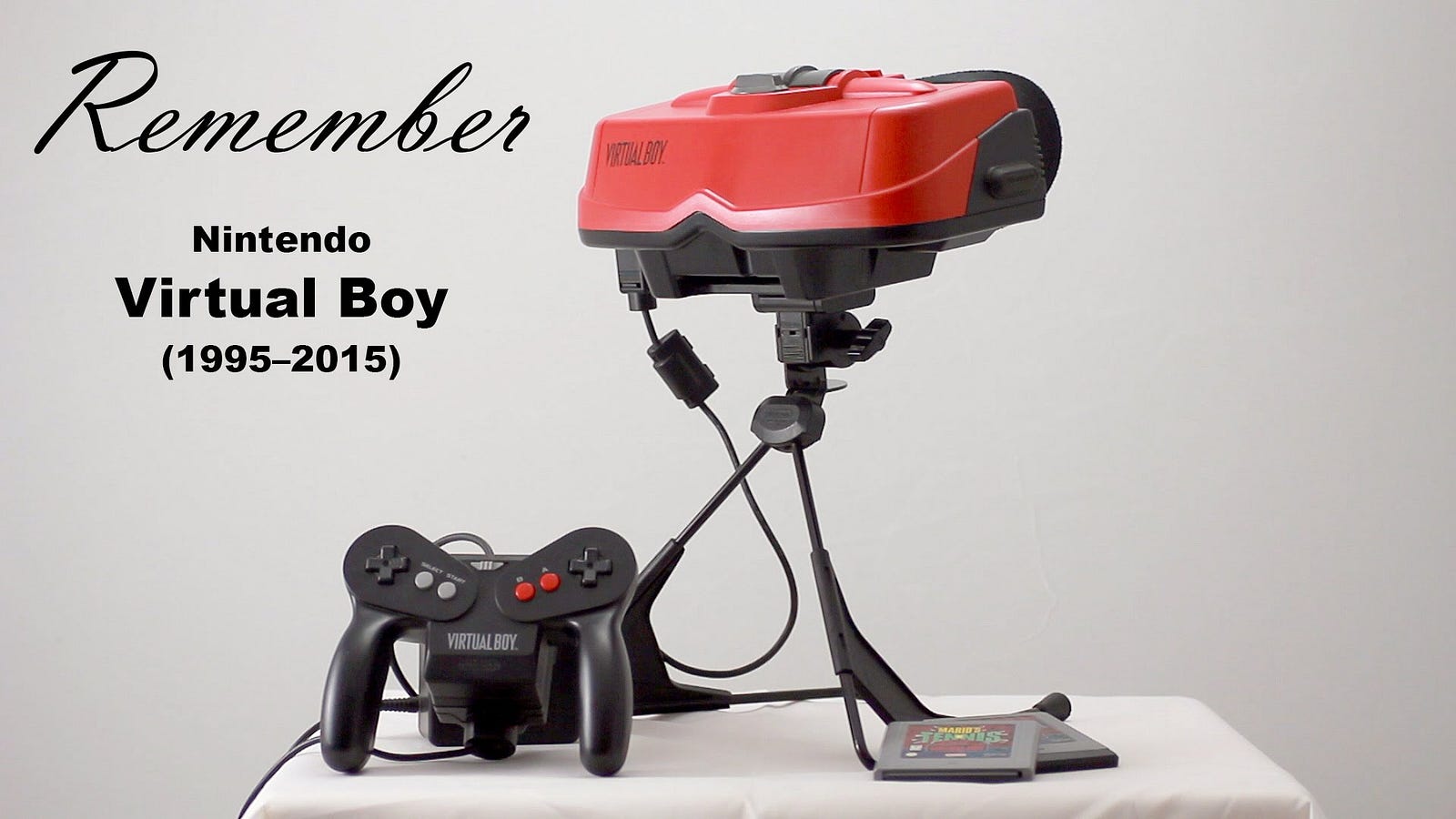
Obviously something. StartupYard has received more inquiries from AR/VR and so called “mixed reality” startups during our current open call than in any previous year. In fact, I’ve personally met more VR startup founders in the past 6 months than I had in the past 4 years combined.
Why are VR/AR Startups Applying to StartupYard Now?
This year, we got an influx of applications from startups, all working on AR/VR technologies and applications. We shortlisted several, and eventually accelerated two: Mixed Reality Cloud, and Mindbox. In this post, I’m going to outline a few reasons why I think the AR/VR train is suddenly coming into the station in 2017.
As with any technology, there is not always a perfect correlation between being able to do something, and having a good reason to do it. As we will find in this piece, technologies tend to really explode only when both those conditions are fulfilled.
Thus, here are a few reasons AR/VR is a legitimately big deal for early stage startups in going into 2018:
1. The Smartphone Has Peaked
As Gizmodo noted over a year ago, the massive adoption of smartphone technology has peaked, and is now slowing down as consumers cycle more slowly through technologies that bring fewer noticeable improvements, at a lower rate over time. The release of the iPhone X, for all its technical achievements, underlined the basic premise: the smartphone concept has been fully articulated, and is now undergoing continual refinement.
Smartphones and tablets have ceased to double and redouble their abilities every year, and have begun to be refined into replacements for the traditional desktop computer for many consumers. Already, tablets and phablets have replaced home computers for many consumers. In business, the same trend will likely follow.
This has had a few consequences. First, the core benefits of a smartphone have more or less been fully realized. A typical smartphone can do almost anything you’d want it to do. There is no longer a huge demand for performance improvements, given that even a low-end phone can do so much. The market has become highly differentiated, and every niche has been filled.
Second, as smartphones have become ubiquitous, the businesses built on leveraging them have also achieved scale and begun to saturate the market. As room runs out for smartphone makers to stand out against competitors and justify their higher prices, new use cases must be found or invented. And VR, particularly recently, has been the beneficiary of that pressure.

And…
2. We’ve Hit Peak Mobile
Related but distinct is the peak of the “mobile revolution.” It may be hard to believe, but it was only in 2016 that mobile web browsing overtook desktop browsing for the first time. Today, a majority of human interaction with the internet is done using mobile devices.
Facebook, at the center of that revolution, has grown to over 2 billion active users, but its unprecedented growth of the late 2000s and early 2010s (which was around the time Facebook transformed itself into a mobile-first company) has slowed to a crawl. Not because people are using it less, but because it isrunning out of new people to add to the platform.
As a sign of how mature the mobile market has become, Facebook indicated in 2016 that it would soon run out of space to show people ads on their newsfeeds, prompting the company to begin delving into new experiences in which customers can see and interact with advertisers (such as messaging, and soon, VR).
The mobile revolution brought the age of apps from the Apple App store, Updates from Facebook, Google Maps and the Play Store, and mobile gaming. Mobile gaming alone became more profitable than traditional gaming in 2016.
Again, as with peak smartphone: peak mobile means that mobile software and content developers, along with advertisers, face higher competition and a more saturated market than ever before. Differentiation on mobile has become harder, and so they are actively seeking new media that can provide fertile ground for new content, and new marketing.
And…
3. We Still Need Immersive Experiences — and We Aren’t Getting Them
Gartner noted in their predictions for consumer digital technology in 2017, two very interesting trends. First, that the key upcoming innovations in mobile mostly have to do with AI, IoT (Internet of Things) and ubiquitous computing. Not with consumer applications, but with intelligence and data layers that enrich our lives without necessarily meaning we need to actively engage with them.
And this is backed up by recent hardware developments. Amazon is promoting home computing systems with no physical inputs at all. Apple has just announced the HomePod, which again, proposes to eliminate some use cases for smartphones and televisions, and free up our eyes for looking at, I suppose, other people. I have been told that is what people used to do.
There has been a lot of talk about how the Amazon Echo and other home audio devices are a new medium for advertising, but I’m sceptical of how important that will be in the future. In a technology landscape where more and more of our contact with computers and information is self-directed, and two-way, the nature of advertising and marketing will have to change as well. Perhaps in 5 years a display ad will be a dying relic, and new “marketing AIs” will instead engage directly with individuals to find products that best suit their needs.
At the same time, Gartner predicts that VR, not television, and not tablets or smartphones, will be the leading area of innovation for digital media. So as home computing trends toward becoming less obtrusive, and less all-consuming, at the same time, VR promises to offer a deeper content experience than any medium ever has before.
If smartphones and home computers are going to be less attention-consuming than ever, then where will content creators and marketers go? A good bet is that many will see AR/VR as fertile ground for development. What better medium than somewhere people choose to go to become totally absorbed?
3. People Aren’t Happy with the Status Quo
As smartphones and mobile-first applications have become the core of our experience of media in general, our experience of online content and storytelling has, in some ways, become less impactful. Everything is noise, and nothing is substantial- a feeling you’ve no doubt detected on your Facebook News Feed more than once. Technology has progressed, but it’s failed to deliver experiences people engage with ever more deeply. We may check our phones hundreds of times a day, but do we watch whole movies, read a whole magazine, or play through entire games? Not so much.
And in fact, consumers are not happy with these changes. The ASCI found in its most recent consumer studies, that consumer satisfaction with computer software, smartphones, and social media platforms declined overall in 2017, or failed to make any gains – breaking a decade long trend of increasing satisfaction in these areas.
So we’re getting sick of the status quo. VR can be seen as literally the antidote to checking a smartphone 150+ times a day: a medium that requires your full attention as no other digital media does. And that’s a super attractive prospect, not only to a content creator, but to an advertiser as well.
As the smartphone has evolved, it has at times tried to fill very contradictory roles. It wants to be, by turns, invisible, and very visible: innocuous, and attention getting. We’ve cycled rapidly between smartphones technologies that virtually disappear into the background (like smartwatches), and those that dominate our field of view, like phablets, and even mobile VR headsets. Very often the same companies, like Apple and Samsung, try to sell us both ideas at the same time.
But I am betting that the age of “in-between” experiences is not going to last forever. Ultimately, people want rich content experiences. People still go to cinemas, even though they can download thousands of titles on demand. People still read paper books, even though it rarely makes economic or practical sense anymore. I would bet that VR will join staples of media like the book and the cinema- a technology people use not for convenience, but for the value and depth of the experience.
And…
This is What Big Data Was Always Supposed to Do
StartupYard has been involved with data focused companies from the beginning. But for years, up until just very recently, one of the only ways of turning big data into a business was the same way people had been doing it for generations: selling it to somebody.
Of course, that generated many user-facing applications that enhance people’s lives and make things easier, but at the end of the value chain for most data, there is an advertiser waiting. Facebook, Amazon, and Google have built empires on that assumption, and Apple and Microsoft have made the infrastructure and devices that generate the data, and make it possible to distribute the resulting content, with ads embedded.
Data may still be “the new oil,” as it has become popular to say, but we must remember that as with oil, it took many years, and many fits and starts, to discover its ultimate potential.
Consider the evolution of oil in the modern world. First we burned it, and when that trick got old, we figured out ways of distilling it to make it burn even hotter. Then we figured out that you could use it to make things: chemicals, plastics, synthetic rubber, and other materials.
The innovation with oil wasn’t setting it on fire (we have known oil burns for thousands of years). The innovation was in making novel things out of the oil: fuel, but also tires and even whole cars, smartphones, microchips, and everything in between.
So if Data is the New Oil, then VR may be the new Plastic
VR promises at least one way in which big data will actually translate into novel products that ordinary people can use. Creating artificial environments, or enhancing existing environments with information and interactive elements takes a lot of data. As sensors and data processing platforms have grown in complexity and scale, we are approaching a point at which we can use that scale to be creatively free to make new things.
I have met recently with more than one startup who are counting on that very assumption: that now, unlike ever before, we have enough data about places, objects, physics, and people, to make artificial environments that will be fulfilling to use, and add detail to real environments that will be really useful.
I believe that a century from now, we will view VR as the child of big data — just as we now view the automobile as the child of big oil.
And…
VR Was Inevitable, But Not Always Obvious
There are some technologies that have been so easy to describe, that we’ve known we wanted them since long before they were possible. Powered flight, for example. For centuries, humans understood the benefits of flying, but still, we didn’t have the knowledge or skill to make flight a reality.
And yet other technologies are strangely elusive in that way. The telephone was patented in 1876 by Alexander Graham Bell, who, according to legend, was unable to sell the technology to Western Union for $100,000 because they thought it was a toy.
Despite what we know now about the transformative power of the telephone, it’s surprising to learn that despite the fact that transatlantic telegraph cables existed before the telephone was invented, the first transatlantic telephone call took place over 50 years later, in 1927. And that first phone call from England to the United States happened the same year as Lindberg’s first flight from New York to Paris, only 24 years after the first working airplane was built.
Airplanes were never underestimated, but it took a lot of imagination to picture the way the telephone would transform life as we knew it. Western Union had been right at the beginning: without a dense network of connections to make it truly useful, the telephone was only a novelty. You needed dense telephone networks on both sides of the Atlantic to make a transatlantic call economically viable. Yet when it became commercially viable, the benefits were so obvious that in another 25 years, there was a telephone in literally every house in the developed world.
So while international telephony was inevitable due to its technical advantages, it was not obvious, due to its network dependency.
VR is a lot like that. It’s been not much more than a toy for decades, because the network needed to support its most promising functions hasn’t really existed until recently. How do you generate content? How do you distribute it? These solutions have been long coming, but they have only just begun to make VR an obvious area of growth in the future.
And today, startups are seeing opportunities in the same way that businesses first began to realize the potential of the telephone decades after its invention. A network has been needed, and today, with a world full of smartphones, connected by social networks, and filled with content creators and eager marketers, that time has finally arrived for VR.
Applications are open for StartupYard Batch 9!
Are you a startup, or an entrepreneur with a great Deep Tech idea?
Applications are now open.
Meet Mixed Reality Cloud: Augmenting Our Reality
/in Interviews, Life at an Accelerator, Startups, StartupYard News/by StartupYardIt has been a year of firsts for StartupYard. In Batch 8, we’ve invested in our first vr company, our first Regtech company, our first Proptech company, and finally, our first Augmented Reality (AR), or “Mixed Reality” company as well.
Mixed Reality Cloud, headed by Adam Roszyk, is working on their first augmented reality product: Cloud Stories. It’s a “Photoshop for AR,” allowing creatives in advertising and digital agencies to create AR experiences for brands with no coding, and no need for a specialized IT development team. Roszyk’s mission, as a long time AR geek and a serial entrepreneur from Poland, is to push AR out of the realm of geeky ideas, and into the mainstream, by helping brands to create compelling content and experiences that blend with our reality.

The future of advertising (and content), is AR. Where will your customers be in 5 years? I talked with Adam about the project this week:
Hi Adam, first of all, I think we all need a little education on the difference between Augmented Reality (AR), and Virtual Reality (VR). What is the difference, and what does Mixed Reality Cloud do?
Hi Lloyd, first of all if our readers haven’t yet tried Virtual Reality – they’re missing something important. Both VR and AR are new types of human-computer interaction. They will replace keyboards and screens in the coming years.
For me, the difference between VR and AR is similar to how a PC is different from your smartphone – VR is like a PC, or game console – it cuts you off from the real world to take you to the center of a story, game or movie. It requires full dedication.
AR is lighter, but even more powerful – it’s gonna replace your smartphone. It allows a computer to overlay objects and information onto the real world, in a way that feels natural.
This “overlay” of information will be similar to what a smartphone gives you now, but will exist in forms more connected with real objects. It will allow computers to give us much more timely and useful data, based on what we see, not what we type and tap. It’s everything a smartphone can do, but without having to look at a hunk of metal and glass all the time.
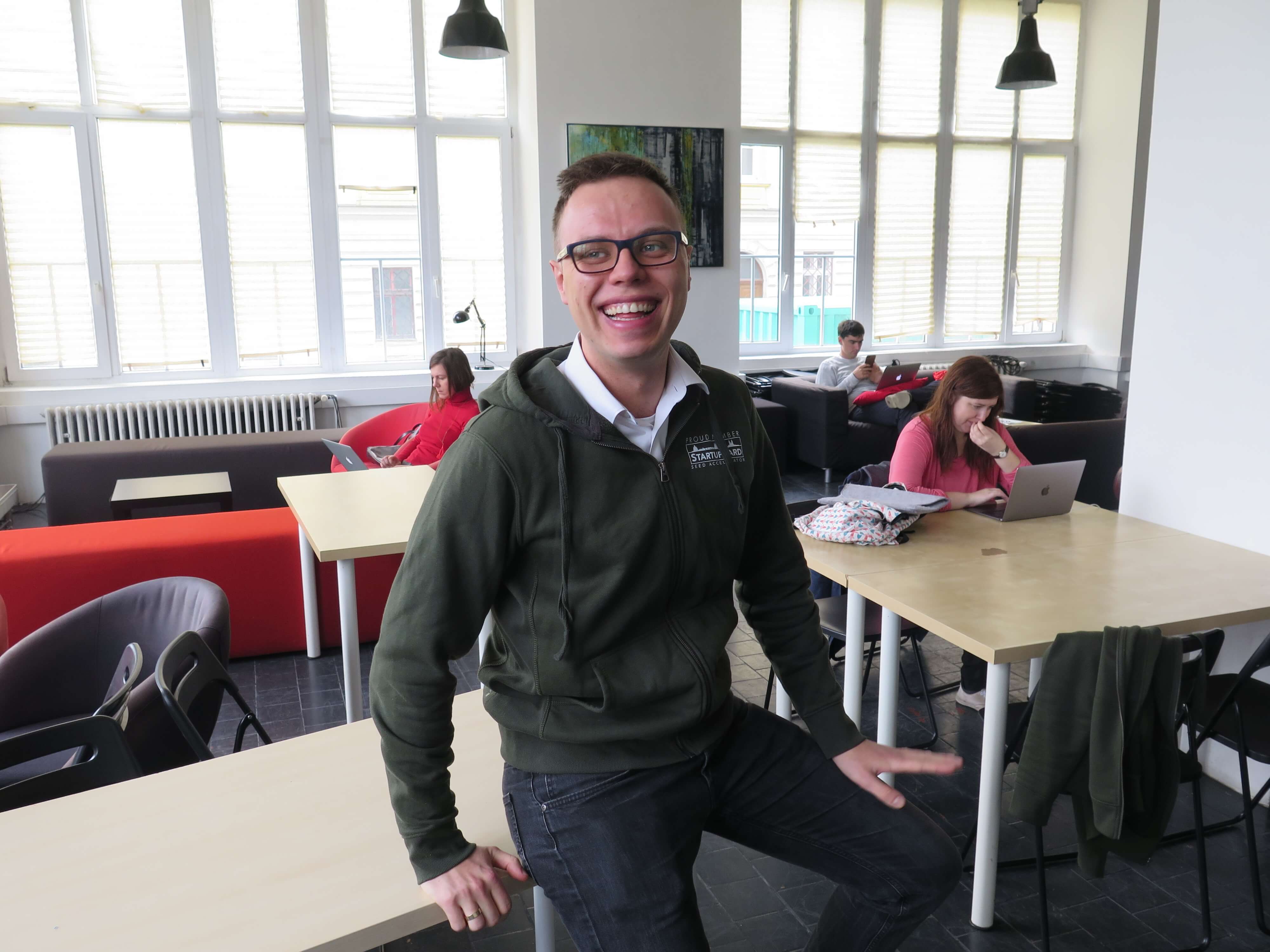
Adam Rosyzch, Founder and CEO at Mixed Reality Cloud
If you think about it, we have been familiar with the AR concept for many years as a society, via Sci-Fi films like The Terminator, or Iron Man. AR is great for film because it eliminates the very non-human, nonorganic idea of staring at a screen all the time to get data and use a computer. It has been used to show audiences how a computer thinks and decides things.
Very soon, we will start seeing how average people will enrich their environments using AR.
That’s what we are working to do. Mixed Reality Cloud is like Photoshop for Augmented Reality. It’s a set of tools to build AR applications. We do that by creating a virtual space in which a designer can create and test ideas, and then deploy them to the real world in AR experiences.
AR experiences are amazing for mixing ideas with the real world around us. How does a new car look in your driveway? How does a lamp look in your living room? How cool would it be to have your favorite Pixar characters walking around your house?
We don’t currently have software specially made to design and build things in Augmented Reality, and make those experiences accessible for ordinary people.
There are great 3d engines, that try to support AR as well, but at their core they will stay 3d engines forever. We’re AR at heart, and we’re focused only on tools which are necessary to bring AR to everyday life.
What’s your background in technology, and how did you come to found your own company?
I was studying CS at University of Adam Mickiewicz in Poland, where I started my first company, FunBrush. It was an IoT connected toothbrush to make brushing teeth more fun for children. It allowed kids to watch a screen and play a game while brushing their teeth, and parents and kids loved it. I raised funding at a $1mln valuation for this company, and led it from idea, to first clients, but we failed with scaling up the project.
I think the idea was a bit ahead of its time. The technology wasn’t common enough yet to make it easy to adopt. But that’s life.
After that, in 2015 I moved to San Francisco to work at VicariousVR – where for the first time in my life I tried VR myself.
Is the Hype over AR/VR overblown right now, or is something bigger happening?
VR has been overhyped many times in the past. The promise of the tech has always been too big for what we could actually do.
Now the market is slowly realizing its true potential. Every month we see more and more examples of new industries adopting it as a tool; graphic designers, architects, data analytics, or even armies.
VR still has many problems – it’s tethered to expensive pcs, you need tracking devices, there’s no keyboard in VR, etc. However – it’s like the first Mac computers: first we see entertainment and business use cases, then devices get cheaper, operating systems get smarter, and most important there are tools, which can be used only in VR. Businesses begin to see an advantage over those who are not using it yet. Then we’re gonna see way more broad adoption.
AR on the other hand seems to be underhyped, really but isn’t. We still don’t realize how much it’s gonna change our everyday life.

The 2017 film Ghost in the Shell demonstrated the potential uses of Mixed Reality
We’re in the Node5 – everyone is sitting in front of their desk typing on a keyboard and staring at a tiny monitor in front of them. Let me just remind you of something: that is not some law of ergonomics, and it is not the way people worked even 50 years ago. It won’t be the way we are working 50 years from now either.
Having lived with AR for years, this arrangement already seems old-fashioned to me.
AR will allow people to work wherever they want, without any other physical devices. You know – computers let people get rid of calendars, rollodexes, calculators etc. Eventually they allowed us to move our work from the desk to the cafe, and have everything with us.
And now AR will help us get rid of the desks and computers completely. You just won’t need them, any more than you need a physical rolodex.
Mixed Reality Cloud is focusing first on advertising agencies. Why are these a natural early adopter for the technology, and what problem do you solve for them?
That’s right. Creative and digital departments in advertising agencies are our first customers.
It’s because those people are the ones who already recognize the potential of AR, and they already gets requests from their clients about creating AR experiences. Ikea just released an AR app for phones, where you can see how a sofa will look in your living room before buying it. That’s just the obvious stuff.
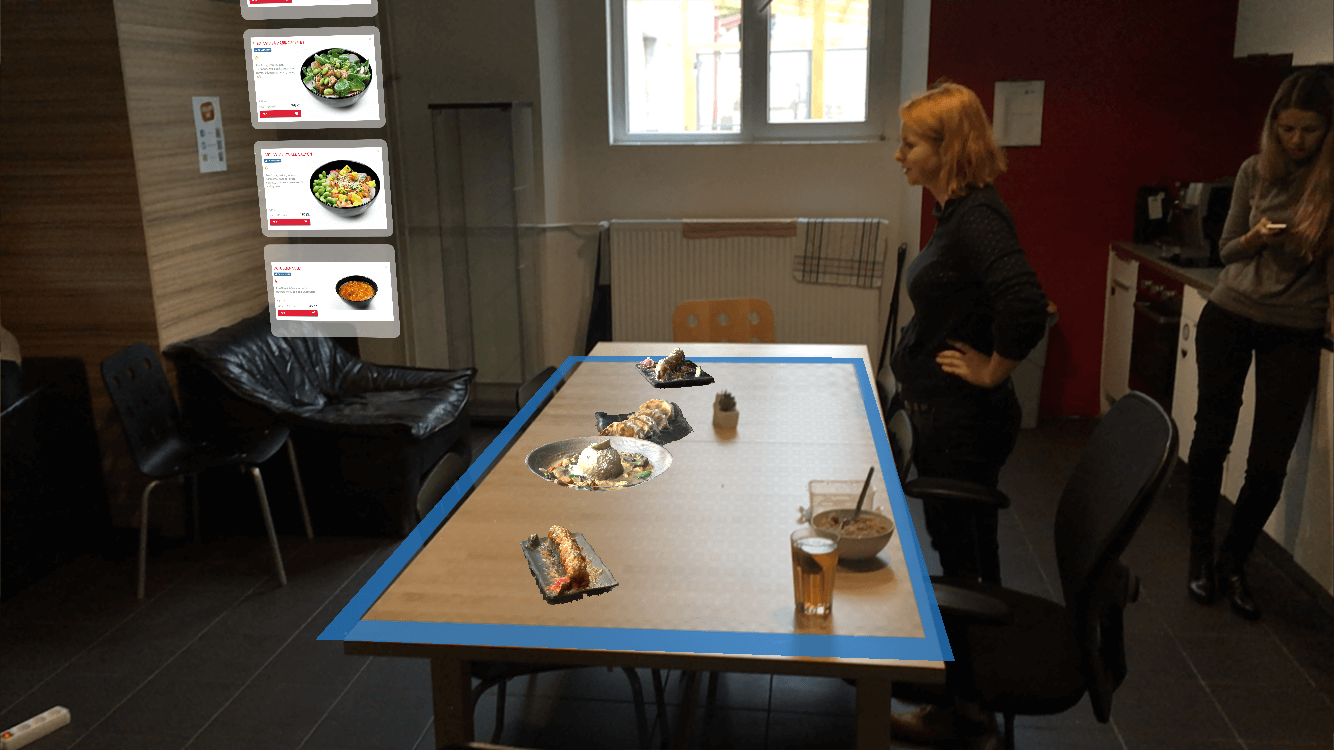
Using Mixed Reality Cloud to look at some food items that aren’t really there.
Every business can came up with a similar case of how AR can help them promote, sell, or educate their prospects. I think the first big innovations in this area will come from content, gaming, and advertising – that is the classic progression for a new medium.
But the problem is that marketing agencies don’t have the tools or the know-how required to offer AR to their clients. That’s why they’re using our first product – Cloud Stories – to fill the gap in their production toolchain, and have a tool – which allows them to deliver high quality AR content quickly.
You’ve been talking to a lot of potential customers in advertising and design. How do they see the future with AR advertising? What are some of the coolest ideas that might be mainstream soon?
Let’s dive 5 years into a future where you are using AR glasses everyday.
Anything is a control surface. Anything can be enriched with data, if you want it to be.
Just imagine how special your coffee mug is with those glasses: you can see how fresh it is, see how hot it is, or make sure you don’t accidentally start drinking from the wrong one.
Now your calendar, news feed, or maybe even your Slack channel are a gallery of holograms. These data take the shape you choose, and appear when and where you want them, making it easy to share them, experience them, and get the best use from them.
Or you can have a look at a bike you’ve been thinking about buying recently. And it’s beautiful – on roads of Toskania, late in the evening, displayed as a highly polished 3d animation right in front of you.
Everything will change with AR. With AR everything around you will have an internet connection– through you. Floors, doors, newspapers, credit cards – also everything will have it’s own interface, yes – every physical object you want- will have any additional layer of information you want it to have.
Putting control surfaces on objects will be as easy as grabbing a new app today. Probably easier. Buying products will be a smarter experience: you won’t waste as much, because you can see how a thing will really work, and if you really need it.
You’re buying a tent – isn’t it difficult to buy one online ? How do you know if that size is right ? With AR, you can set up a campsite in your garden and buy everything you need from AR. You can see and really think through your decisions, and make smarter ones.
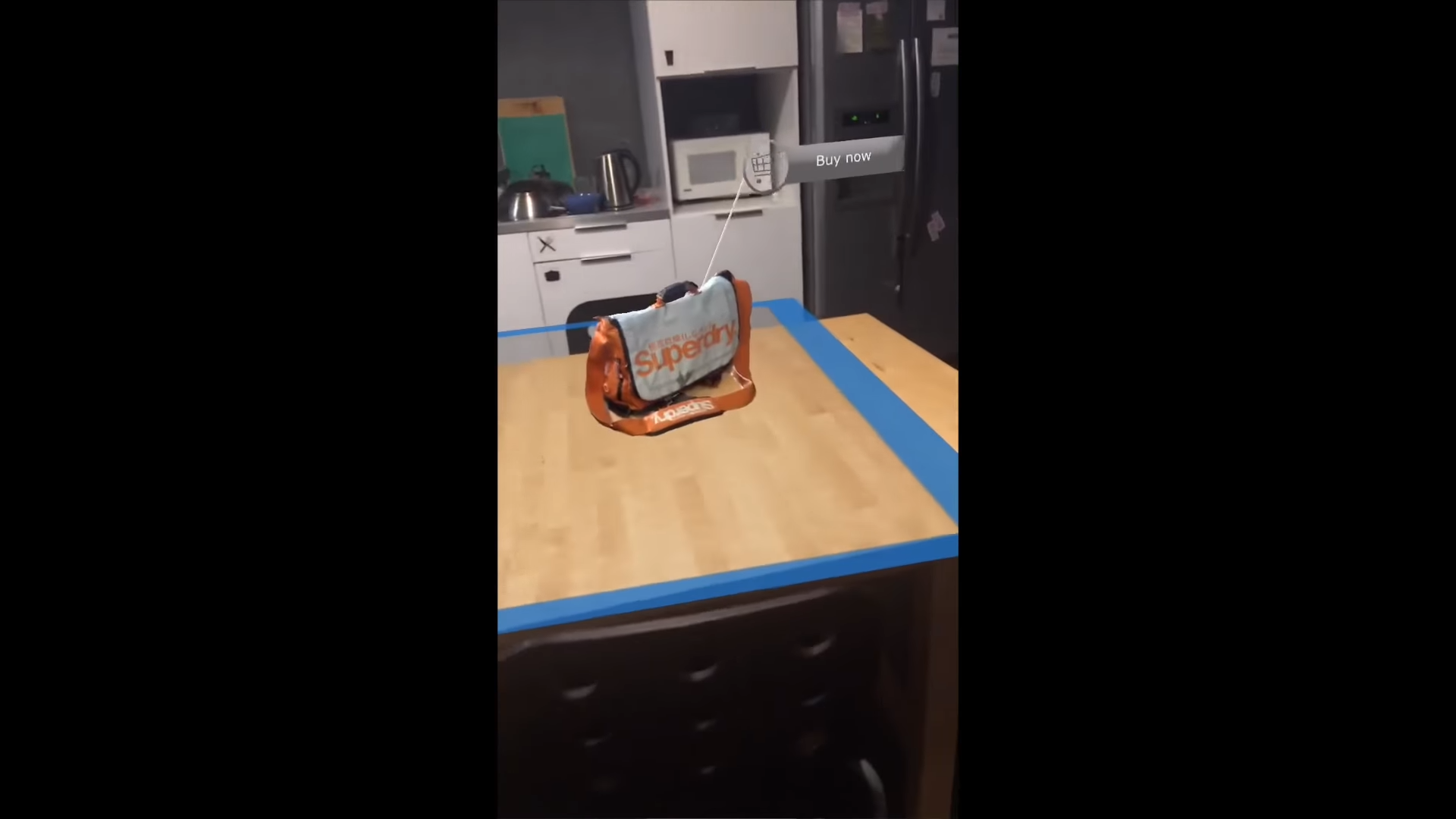
A bag presented in AR via Mixed Reality Cloud- it’s hard to tell it isn’t really there.
Imagine searching for a nice place for a date with your wife – wouldn’t it be cool to see 3d models of the places and dishes, instead of just flat 2d photos? That kind of thing can even be experienced on your existing smartphone – like a little window into the AR world.
AR will democratize 3d content – it’s a long process but we’re gonna get there. Now it’s time to build tools for capturing, creating, and editing this content.
Some people view this vision of the future as scary, or invasive. It’s a common idea in dystopian sci-fi, for example. Are these cultural critics wrong about the promise of AR?
Wrong is a strong word. I think in films and writing, you use these ideas to highlight the nature of people, and show how society can go wrong. So advertising and Augmented Reality are often mixed in sci-fi to exaggerate the problems of our current world onto a possible future.
You can learn from these visions, but remember that you have an effect on your own environment. People won’t accept things that they cannot accomodate in their lives, and many marketing strategies have failed because of that. In California, for example, they tried to play tv commercials at gas pumps and checkout lines in the grocery store. People hated it, and they went away. The truth is they didn’t make sense for the advertisers because of that.
We should look at marketing as more about trying to offer people things that are genuinely relevant for them, in the right time and place to help them make decisions. This idea of dystopian hyper-aggressive advertising is not nonsense, but it does ignore the point of branding, which is to be seen favorably.
Brands can use AR to do public art and competitions. They can do it to delight their customers, and there will be ways of shutting it all out, just like there are today. Still today, advertising is a “price” you pay to get something you want, it’s not a tax that everyone must pay no matter what.
Why should big brands embrace AR technology, instead of relying on existing channels and methods of delivery? What’s the unique benefit in AR?
You could ask me about the unique benefits of mobile advertising in 2009. There are many benefits in the technology, but what made brands embrace it was that the users spent their time on their mobile phones. It will be the same with AR: the brands will follow the users, and the most creative companies will be there first.
In the last 10 years, it became possible for a company to thrive on the power of one mobile app. And AR will be just like that.
On YouTube you had RedBull, or a million startups selling cool new gadgets that look amazing on video. On AR there will be a big opportunity for brands to shape their image for the new generation. The risk takers will be rewarded.
Teenagers are already native to these technologies. They just gets how it works immediately, like a natural progression from mobile phones. AR will become something as natural as the swipe, or pinch to zoom – it will go from something weird, to the being “the way computers work.”
Brands cannot afford to wait much longer.
What is the main technical challenge you’re facing with your technology right now, and how are you planning to solve it?
The key challenges are streaming 3d content to a range of devices like phones, and standardizing how we code 3d assets.
3d models are essential for Augmented Reality, but the problem is that they’re much heavier than 2d photos. To be smooth and natural, they need to work very reliably and fast.
That’s why we’re working on a streaming technology, which will let users downloads only parts of assets which are necessary right in the moment. We’re working also on our own format for 3d assets, which will make integration with other tools easier.
You’re one of the younger founders at just 25. How has the experience at StartupYard been for you? Do you think your age has had a big impact on your experience?
Startup Yard has been great for me, mainly because it was reality check for the idea and strategy behind our plan. Talking to 150 mentors in the first month gave us a great perspective on the market and the product fit. It would be impossible to organize such an intensive period without your help. Thank you for that.
There’s no too old or too young in startups. Execution, experience, network and knowledge – those are important things, which you need to consider. Iyou don’t have them, fix it. Get the proper help on your team.
.
Having no resources is a challenge, but having no resourcefulness is death. One thing you learn at StartupYard is how really to value the experience of others, and use it well.

Who has been your most important mentor from StartupYard, and why has that person been so influential?
I think that you Lloyd and Cedric have been the most important people in the program for me – always looking forward to hear my thoughts, share ideas, give your own perspective, and willing to show me what effects certain decisions have, before making them.
Darko Silajdžić, from DDB (one of the world’s biggest advertising firms) was really helpful – and in terms of validating our product ideas, Darko has had a profound impact as well.
How can people get access to the technology you’re working on, and start using it?
Sign up on our website to the newsletter about the latest/greatest in AR: www.cloudstories.io
Also you can read my medium, I write a lot about immersive technologies: https://medium.com/@RykAdam
Applications are open for StartupYard Batch 9!
Are you a startup, or an entrepreneur with a great Deep Tech idea?
Applications are now open.
Meet Mindbox: The Future of Sales Training is Virtual Reality
/in Interviews, Life at an Accelerator, Startups, StartupYard News/by StartupYardMindbox is every sales coach’s dream. It’s a Virtual Reality (VR) platform that allows sales trainers to create unique, repeatable, and data-enriched training activities in a virtual environment.
The team behind Mindbox, who join StartupYard as members of Batch 8, are Slovak entrepreneurs Peter Tomasovic, and Andrej Rybovic, old friends who have been VR geeks for many years. Originally, they began work on Mindbox as a tool for psychotherapists to treat anxiety disorders and phobias. Quickly they realized that anxiety and stress are widespread outside the clinical setting, and they set about looking for solutions to occupational challenges that many typical employees in large companies face every day.

I sat down with Peter to talk about how Mindbox became a toolkit for the sales trainer of tomorrow:
Hi Petr, tell us a bit about your team, and how you came up with the idea for Mindbox.
Hi Lloyd! Mindbox started out as something very different from what it has become over the course of StartupYard. It all got started two years ago, when I was just playing with VR (Virtual Reality) technology, and a few of my friends were finishing school in psychology. One of them is a clinical therapist now, and the other is a researcher at the Slovak Academy of Sciences.
We are childhood friends, so we started mixing our interests; I came up with some ideas on how to use VR in the context of therapy, and they provided a lot of insight into the kinds of problems that are hard to solve with classic talk therapy.
For example, one thing that’s very hard to treat by talking is a phobia. You need to experience the phobia in a controlled way, and it can be hard to do in a clinical setting. You can’t take a patient to the roof if they are afraid of heights. There is no way to do it in a controlled manner- at least not affordably.
Another thing was anxiety disorders. It’s the same problem: it is very hard to control the process of exposing someone to their anxieties so they can confront them. So MindBox grew from these conversations, and we decided to make it a real thing. We built several “phobia” modules, and even did some testing on real patients, where we found the therapies were really helpful, and sped up recovery.

You’ve pivoted away from therapy to sales training. Can you tell us about that shift?
The experience we gained helping people overcome fears is still at the core of what we do. However, we also realized after talking to mentors and industry experts at StartupYard, that staying within the medical context would be very limiting to our ability to have an impact on people in the real world.
With sales training, you can address many of the same issues as with psychotherapy, but you can help many more people overcome their personal limitations. The benefits of VR are still there: it is safe, controllable, easy to repeat, etc. That can work for a lot more than just a fear of heights.
Currently, sales training techniques are quite good, but they require a lot of setup. Role-playing and workshops with hands on feedback are time consuming, hard to repeat, and are likely to be forgotten over time.

An angry customer in Mindbox
Research shows that after several months, the effect of a training session mostly disappears. If you could follow up on that with controlled re-training and repetition, the insights could be preserved and the training would stick.
A big influence was our new colleague, Serge Dupaux, a former sales training director with a ton of industry experience, who has helped us see the impact VR can make on that kind of work.
So now, MindBox is platform, that allows sales trainers to create VR training modules without coding. Our aim is to make it so easy to do, that an experienced sales coach can let their imagination run wild, and construct really unique challenges that can be shared and repeated even in really large organizations. Mindbox will be the non-coder’s tool for creating those VR training experiences quickly, and getting necessary feedback in the form of analytics, scoring, and other data.
What about VR makes it ideal as an addition to in-person training? Why not simpler methods?
There are easier ways to follow up on training, such as with e-learning, and periodic testing. But these are mostly about knowledge, and not experience.
Typically a sales trainer spends a lot of time simulating situations with the salesperson, doing role playing, and rehearsing strategies. That is quite personal, and can be affected by relationships, the moods of the people, and even the weather or time of day.
If you can add VR as a supplement to this training, then you can eliminate some of these variables and reinforce the important elements of the training. All the salespeople have a chance to work at their best, and experience the same quality of feedback and the same sense of immersion.
With traditional testing, you check knowledge. Here VR can be used to check attitude, comfort levels, and other soft skills that don’t appear in other tests.
How do you see VR becoming a broader part of how we do skill acquisition in companies, or even in schools? What will things look like in 5 years?
Our vision for VR at MindBox is about making it a regular part of somebody’s work life. It’s not just about sales training, but also skill assessment, team building, and skill extension and retraining.
Lloyds Bank already uses VR to assess employees, for example. I think this will happen much more. Of course the benefits of VR assisted training are clear also in dangerous jobs, like firefighting and police work, or in medical training. Already we use very sophisticated flight simulators to assess and train pilots.
I see VR training being a fact of life in 5 years. Everyone will see the benefits and the impact it can have. It will not be everything, but it will be a common tool.
That is why it’s important to us today to create a platform where the most creative uses of this technology can be invented and put in practice quickly, to move VR out of the geek basement, to the mainstream.
Further Reading: StartupYard’s Recent post on why so many VR startups are applying to Accelerators in 2017
Short term, what are the biggest technical challenges facing MindBox, and how do you plan to solve them?
The big problem nowadays is finding good people – technical people. We are looking for Unity3D developers, and it is very hard to find them. At MindBox, we are not looking for “just” an employee or someone who wants to try to work for startup. We are looking for a friend, team member, and a developer with ideas.
How has your experience been at StartupYard? What has surprised you, or particularly challenged you as a founder?
The experience at StartupYard was groundbreaking for us.
It has changed the life of MindBox and the whole team. First of all, we found not only mentors, but also friends, passionate people who are helping us and who are pushing us forward.
Most surprising for us was the team and mentors’ will to help. They don’t just introduce you to someone, they care about your progress and they are come up with ideas to help you as a business and a person. I have never seen something like this.
For us, StartupYard is something, like university and business school in 3 months. We definitely recommend it to every startup, because StartupYard can save you years of work.
How can people get in touch and see how MindBox works for themselves?
Right now, MindBox is in private beta. Trainers or companies can contact us and it would be pleasure for us to meet with them and talk more about VR and how VR can improve the effectiveness of their current sales training programs.
Applications are open for StartupYard Batch 9!
Are you a startup, or an entrepreneur with a great Deep Tech idea?
Applications are now open.
Introducing WayMark: AI for Regulatory Compliance
/in Interviews, Startups, StartupYard News/by StartupYardWaymark Tech is the second company of the StartupYard Batch 8 group to hail from sunny England. Mark Holmes, CEO and Founder of Waymark, left the world of financial services to found his first company at 38, with a unique set of life experiences from the City of London.
Holmes founded Waymark in response to a problem only AI can address: the modern world of regulations in a global economy. It’s an AI layer that sits between a company and millions of regulatory documents, directives, and alerts, and helps compliance officers and others to parse the laws and regulations that matter to them, when it matters to them most.
This not only helps companies to avoid costly mistakes, but levels the playing field, so that companies big and small can compete in a marketplace that is frequently unbalanced in favor of one or the other. Mark sees it as his mission to make regulation accessible and useful, rather than allowing it to become an enormous drag upon innovation, and the technological and business advances that can make people’s lives all over the world easier. I sat down with Mark to talk about his vision of an AI that dreams in regulations.
Mark will pitch Waymark tech along with all 7 of the StartupYard Batch 8 Startups at our DemoDay: November 22nd, in Prague. Care to join us?
Hi Mark, how did you get into RegTech (Regulation Technology) to begin with? Tell us how you decided to found a startup to attack that problem.
Often when we think about regulation, especially RegTech, it’s in the realm of Financial Services. That’s where I started.
My father worked in the City of London as Head of Investments for a large commercial property firm, and I spent most of my career there as well. I worked with Morgan Stanley in the equity derivatives department, then Nomura, Deutsche Bank, and HSBC.
I grew up around that culture, which I think has been really valuable to me in my career, and also in what I’m doing now, which is a lot about solving the day-to-day frustrations of people just like I used to be, or my father was.
Over time, I was pulled into focusing on financial technologies, and selling products for big banks and asset managers. During my time at a technology vendor, a lot of my clients were treating me as a pro bono consultant – trying to find out information on regulations and how other clients were approaching them.
As I looked deeper, I realised they were all dealing with regulations manually and knowledge sharing was an informal process. I felt there was a way technology could help with this. I also began to see that it could be applied to other industries as well.

For your customers, what are the pain points that Waymark solves? Why can’t those be solved using existing approaches?
Ever increasing regulations and more complexity is proving just too much for the Industry to handle. The current approach is to throw bodies at the problem, but this is costly and just not scaleable – especially as the businesses grow their product lines and expand into new territories, which brings about more regulatory pressure.
You have a few forces acting at once to create this pressure. The benefits of scale due to mobile technology and e-commerce, as well as the easy transfer of knowledge around the world, means that companies more and more see themselves as global entities. They can execute strategies across many regions like never before.
The goal of a big corporation is to spread the best practices and products to all its markets, to maximize its value. These markets can look similar from the perspective of the product team, or the marketing team, but they are sometimes alien planets in terms of legal issues and regulatory oversight.
As globalization has gone on, regulation has not really slowed down. The complexity of regulations act as a bottleneck for big companies to execute their strategies globally. It’s like having one product idea, and then having to independently develop it in every market you serve. That’s a ton of work, and it can make sharing innovation globally not worth the effort and time.
Can you give us an idea of what that bottleneck looks like?
Ok, let’s say you’re a vineyard in Napa, California, and you have a wine that just knocks people’s socks off. Wine dealers from Europe are constantly buying small batches, and you want to go directly to the European market yourself.
You’re making money, you know wine. But hang on. You have a laundry list of obstacles to overcome. There are 28 countries in the EU, and all of them have a page just like this one on the website of the U.S. Alcohol and Tobacco Trade and Tax Bureau.
What do you have to do to export to any one of those countries? You have to meet a unique set of requirements: Labeling requirements, winemaking standards, import procedures, local licensing, taxes and tariffs, identity and business documents, recycling standards, marketing regulations and limitations, contracts with distributors according to local law… and on and on.
That is of course ignoring the fact that many nations protect their own industries by making competition harder for foreign companies.
Why can’t get you get a nice wine from a small vineyard in Napa? That’s why. Not because you wouldn’t pay for it, but because it’s just too much work.
In the end, that is a shame for consumers and businesses both. We do not have access to all the innovations and products we can, not for a sound business reason, but because the regulatory landscape is too complicated.
Why are regulations becoming more complex, instead of streamlined along with the global economy?
An important question. The truth is that this is as much about politics as about protecting people from harm. Regulations are absolutely necessary to ensure that profit motives are not in total control of what corporations do.
Plus, regulation is increasingly local, while corporations are increasingly global. It used to be that broad regulation covered many smaller companies. Now a single large company must be compliant with a patchwork of regulations across many territories.
Regulations are easy to write, but their effects are hard to predict, so we move in a bit of a cycle. We have a bunch of regulations and directives, and slowly businesses find ways to get around them and innovate faster, and that leads to problems. Then a new set of directives come in and local regulators have to “right the ship.” The corporations then have to scramble to get into compliance again and clean up the mess.
Since the financial crisis in 2008 for example, there has been an increase of 492% in the number of regulations published in Europe and the US. They are wide ranging and touch every aspect of a business. They require a sea change in technology used, in processes and in policies. In the UK, the introduction of the Senior Managers regime means that managers now have to be fully accountable for what goes on – so liability has shifted to personnel rather than the company.
That is why I founded Waymark. It’s an AI layer that lives within a company’s existing information system, and augments it by connecting the company’s activities to relevant regulations. Moreover, it continually monitors the legal landscape, updating compliance officers continuously on new developments.
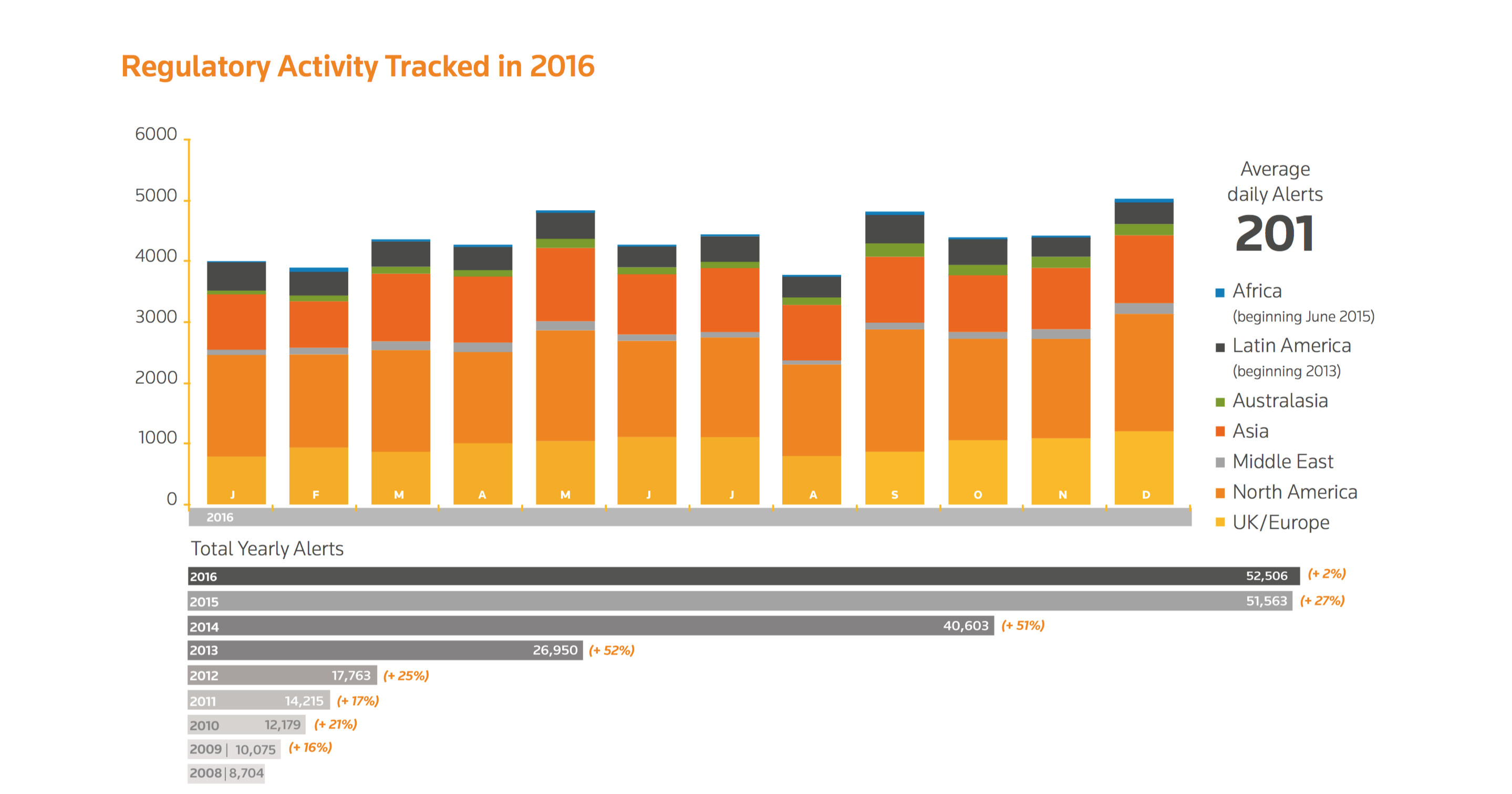
Thomson Reuters [graphic], tracked 201 new regulatory alerts a day in their report on the Cost of Compliance 2017. Companies need that data to be put into actionable format, and addressed directly to the people who it will effect immediately.
What does that look like? Well in financial services alone, there will likely be 200 million pages of regulations globally by 2020, according to Regtech Rising. That volume will be just unmanageable for big institutions and corporations. They will have to have an active AI layer between them and the mass of regulations to keep up.
What does it look like if a company doesn’t use this kind of RegTech in the future?
Story time: some people might remember in the late 90s, that NASA sent a spacecraft to Mars called the Mars Climate Orbiter. What is memorable about that project is that it failed, when the craft crashed during orbital insertion.
What was the glitch? Well, NASA had a contract with Lockheed to provide some of the ground equipment used in the mission. One of those pieces of equipment was using software programmed in non-SI units (pounds and feet), instead of SI (Metric) units.
The agreement between NASA and Lockheed was solid, but it was not properly implemented across the whole operation at Lockheed. The key people just didn’t ever get on the same page. That’s a straightforward example of how a big enterprise can get killed by a small mistake, that Waymark could solve.
In this case, an AI that checks the software against the requirements, to make sure it follows the agreement, would have caught the error easily. Regulations are many times more complex than that, so it becomes nearly impossible to be compliant, and still deliver products to the market and not get sued.
Some would say it’s now impossible altogether. For every dollar a bank invests in compliance, currently, they pay three dollars in fines. That’s how bad it can be. We pay the cost as consumers, one way or the other, with higher prices or with non-compliant products.
Let’s talk about the role of startups in fintech and other industries: how are these new companies using the regulatory environment to their advantage? What can big firms do about it?
Technology-driven nonbank companies, aka “Fintechs” work in a regulatory void – they are not subject to the same regulatory pressures as the traditional big bank incumbents.
This is changing with regulators working out best approaches to regulate FinTech without stifling the innovation. Big firms can turn this challenge into an opportunity by collaborating with, rather than competing against these FinTech firms. Same goes for other industries, such as professional services. The core skill is not in technology, so by partnering with a tech firm, both sides can benefit and ultimately the client is the winner.
With Waymark, for example, a big firm can eliminate a significant part of the process of integrating a new service into their offering to clients. Waymark is an AI layer that lives on your existing software, so if you are suddenly doing something that is forbidden by regulations, you’ll know right away.
Think of GDPR, the new European Data Privacy framework. On day one, it’s likely that a huge number of big companies will not be compliant. How can they move forward with new products if they’re spending all their time catching up with the old ones?
We don’t want that day to be the end of innovation in Europe, so these companies need to adopt new standards, but also new approaches to compliance. They need to get ahead of changes to compete.
You noted that increasing regulatory complexity is going to make product release cycles slower for big firms. Why is that? How will you fix it?
As firms expand their product scope and geographical reach, so they will have to be aware of the regulations in many regions imposed on new products. This increases complexity within an organisation and so will slow release cycles down.
It is one thing to create a global supply chain for, say, a new version of the iPhone. But it is something else again to have a unique manufacturing and supply process for every single market you’re serving.
That’s a big reason why industries push for alignment of regulations, and also seek to make products that meet regulatory requirements everywhere at the same time.
But that is just another layer of complexity, because it means when you’re designing the product, you have to design it with dozens of different regulatory systems in mind. That is not easy.
What Waymark allows these companies and the regulatory consultants working with them to do, is get product-specific feedback across many different legal systems at once, so they can build something that is broadly compliant with their target markets from the beginning.
If you want to make one particular component using a particular substance, you’ll be able to see, from the drawing board stage, the regulatory problems that decision can cause you. You can address that problem from day one, instead of having to deal with regulators at the last minute, long after any changes can be made.
What kinds of customers is Waymark looking for today? Who is the ideal early-stage partner?
We are looking for Professional Service firms such as management consultants or law firms. People who appreciate how much promise there is in AI for regulatory compliance, and are already experiencing serious pain in keeping up with regulations.
An ideal early stage partner is one who has clients in highly regulated industries and is looking for a way to provide a real value added service to their client base.
In the medium to long term, what industries or customer set do you want to target, and why?
We are focussed on Financial Services, Life Sciences and Energy. The way our platform is designed, however allows us to move into other industry verticals swiftly and so would like to partner with someone in FMCG or Telecoms as well.
Soon, I expect that this kind of technology is going to be necessary across essentially all industries and large enterprises of any kind. Once the early-adopting companies show others how much faster and more efficient they can be thanks to AI for regulation, others will have no choice but to implement their own solutions.
Where do you see regulations in 5-10 years, when AI will possibly have a huge day-to-day influence on company decisions?
Interesting question. AI itself will be regulated and I think we will never be at a point where a company’s decisions are solely made by AI. It will be important to be able to show how a decision was made rather than just a black box.
I think in practical terms, regulations will be machine readable and directly plugged into activities – i.e would work on a real time basis, moving in line with business activities. That would mean, for example, that a factory that is making products would be directly connected with regulators, meaning that changes can be made very quickly when they are needed.
You could imagine a country’s whole supply chain being able to react to air conditions or power demands instantly, and regulators being able to tweak regulations on a constant basis to make them work better.
Back to the present, how has your experience been at StartupYard? What drove you to choose Prague as a second home for the company?
It has been very worthwhile moving to Prague for 3 months. The connections, the clarification and validation of ideas has been invaluable. We are now a proper company and not just a couple of people with a platform. We decided we needed a presence on the Continent due to Brexit driving companies in this direction, and Prague is a good base to give access to CEE.
We would be remiss here if we didn’t talk about Brexit. What will Waymark’s role be in helping UK and EU companies deal with the chaos that Brexit is likely to bring large companies on both sides of the channel?
The chaos and uncertainty around what regulations apply and those that no longer apply will be a big part of the problem. Also the possibility of regulatory arbitrage – i.e. if moving from UK, which regulatory regime would be better to move to for your business, will be a big opportunity.
Waymark will be able to help people play out these what-if scenarios to optimise their business. So in effect -not that I’m happy about it- Brexit is just one more argument in favor of using Waymark for regulatory compliance.
The current system, built on individuals accumulating knowledge by picking through documents for years, is very vulnerable to big changes. If tomorrow Brexit happens, then all that systemic knowledge is in doubt, and very hard to replace.
What kinds of customers or partners do you want to get in touch with you today? How can they reach you?
We are primarily looking to partner with Professional Service firms but also SMB’s looking for help with regulations. They can reach us by mail: mark@waymark.tech or via our website: www.waymark.tech
Mark will pitch Waymark tech along with all 7 of the StartupYard Batch 8 Startups at our DemoDay: November 22nd, in Prague. Care to join us?




